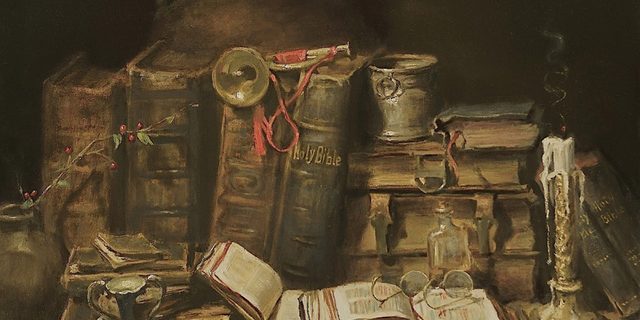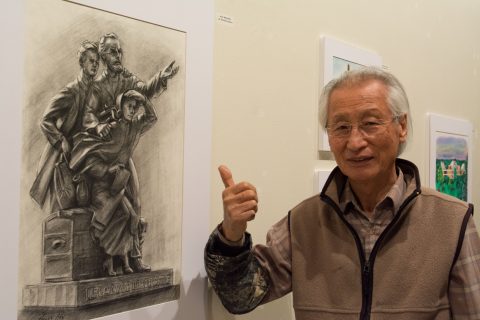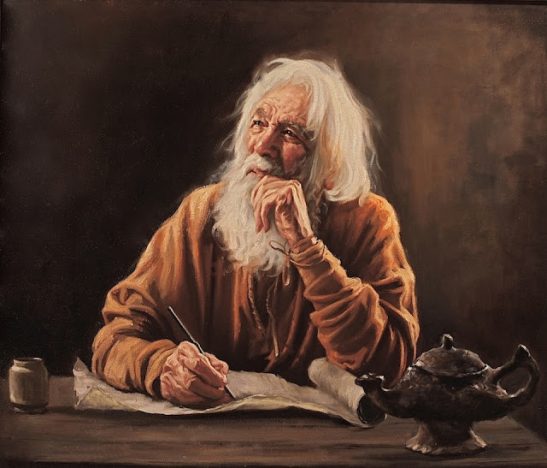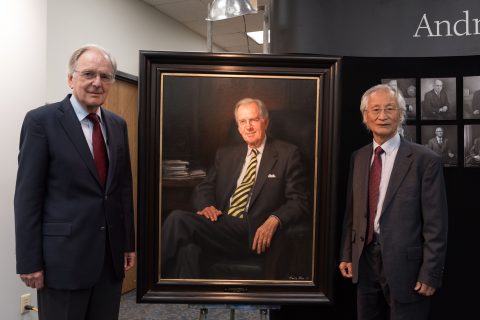

At 79 years old, renowned painter Harry Ahn is showing no signs of slowing down.
"I don't count my age," he says. "I count my paintings. I count my brushes. It makes me a whole man to have a goal to be able to paint like the old masters. That's why I am always working. That's my life.”
Harry recently completed a painting commissioned by Andrews University of the former president Neils-Erik Andreasen, and is in the midst of establishing a painting studio in downtown Berrien Springs.
Artist Harry Ahn has garnered numerous prestigious awards for his exquisite work, which consists mostly of portraits. His portraits of Adventist church pioneers Ellen and James White hang proudly in Andrews University’s James White Library; another painting was featured in the General Conference office. “That’s how I have been helping the [Adventist] Church.” Yet he is humble and gives the credit to God.
As you look at Harry’s paintings, his skillful attention to details and the personality of the subject comes through time and time again. So, how does he capture the humanity in his subjects? The process is not that complicated, he explains. He uses models for his portraits. “I have to make them come probably four or five times, which is hard for them,” he says in his thick Korean accent, “So I just took a picture. You have to see an actual person that is combined with the picture [and] from your memory.” Each portrait takes Harry approximately one month to finish. “You have to set it aside for a while,” he explains. “When you work for so many hours, just looking and looking, you don’t see any mistakes or anything that you have to correct. Then if you set it aside for a while, you will see it with clear eyes.”

Before he became an artist, Harry survived the Korean War, escaping to South Korea as a refugee. He studied nursing, received the English name of “Harry,” and then immigrated to Canada where he began a new life and career before settling in the United States in 1967. “I was brought up in North Korea during the Korean War,” he recalls solemnly. “All this bombing and shooting, you just watch people dying. So many people got sick.”
Although the Korean War ended July 27, 1953, danger still lurked in the form of Korean soldiers searching for survivors to take back to North Korea. Harry and his family knew that they must try to escape that fate. They also had to seek shelter from the chance stray bullets or bombs. Hiding under blankets in a burned, war-torn house, hardly daring to breathe, he explains, “Always you would cover once you get to room. You would cover all with a blanket, all our families, which kept quiet. I just tell them, ‘Don’t say anything; keep quiet.’”
One night, as Harry and his family hid, North Korean soldiers stopped to examine the remains of their house. “After they thought maybe there was no one there, they left,” he says. A few days later, U.S. soldiers came and took him and his family to South Korea as refugees. “The government wasn’t really established to be able to help all of us refugees,” he explains, “So, in order to survive, we had to beg for food house to house. And then, we didn’t have a place to stay. Our family stayed under bridge to cover.”
Being homeless was a traumatic experience for Harry, but the hardship would later turn to beauty by influencing some of his most treasured paintings, a series of homeless portraits. “That’s my most dear painting.”
He was initially inspired by the work of Harry Anderson, after becoming a Seventh-day Adventist Christian. In particular, he admired Anderson’s Bible-inspired works. Struck that this artist shared his name, Harry met Anderson twice before his passing. “I had just become a Christian, and I was so thrilled,” he said. “I was excited. I wanted to pay back to God, because of all this kind of gratitude!”
